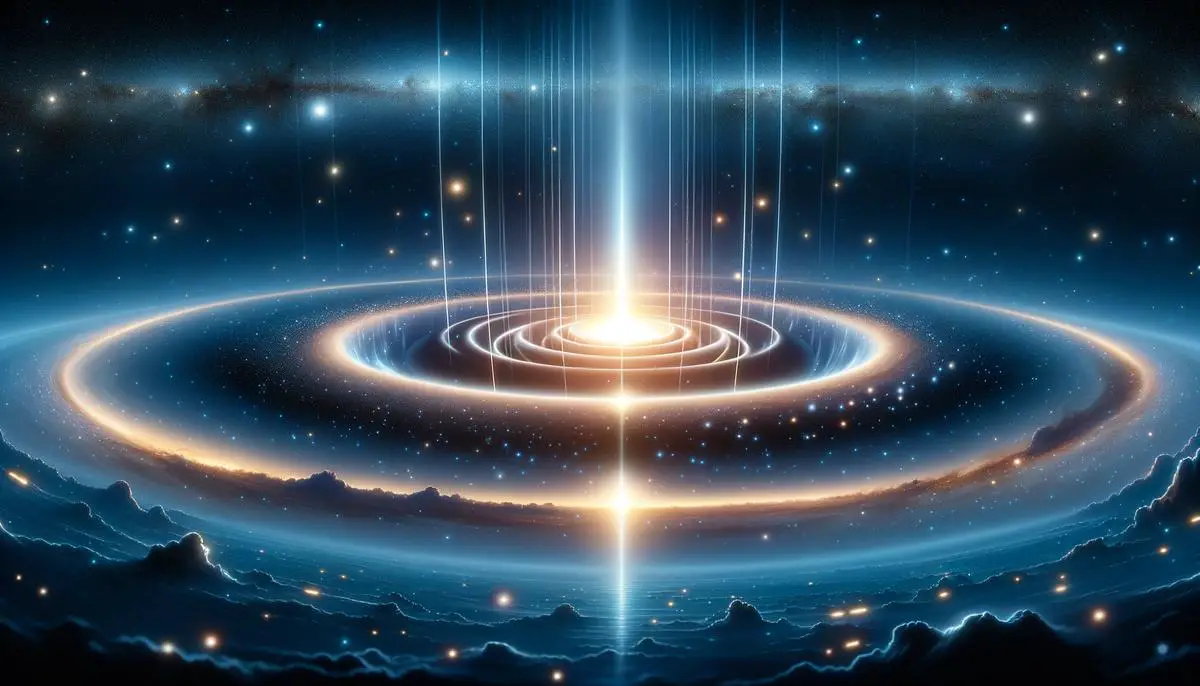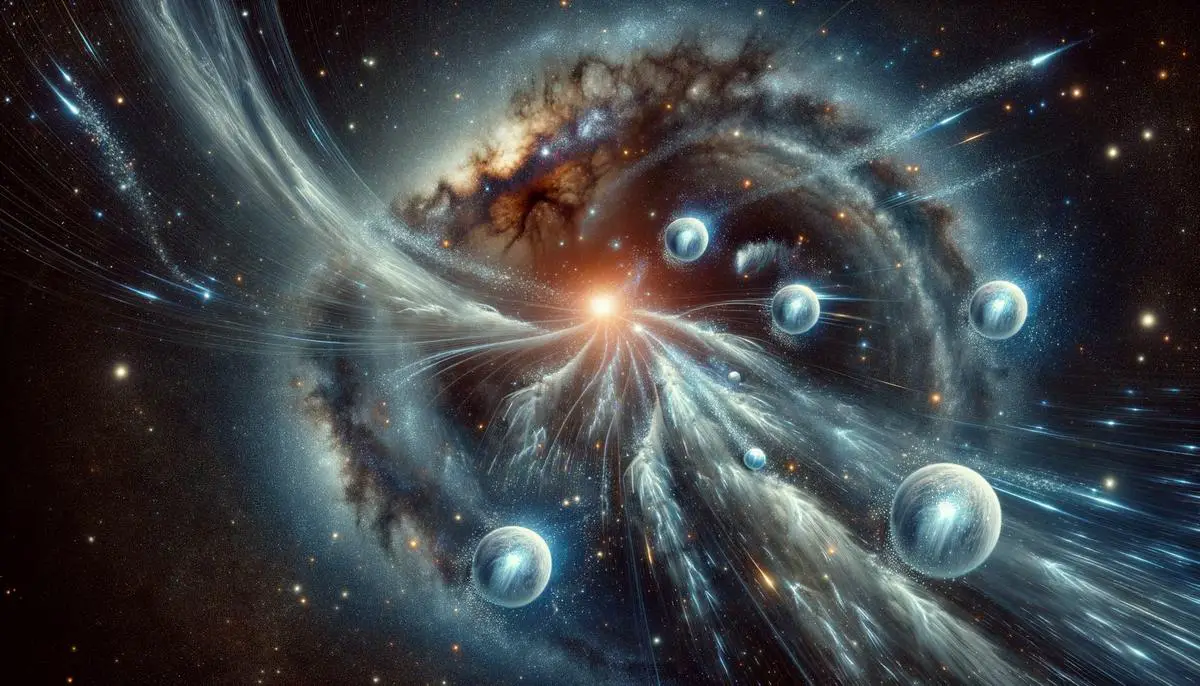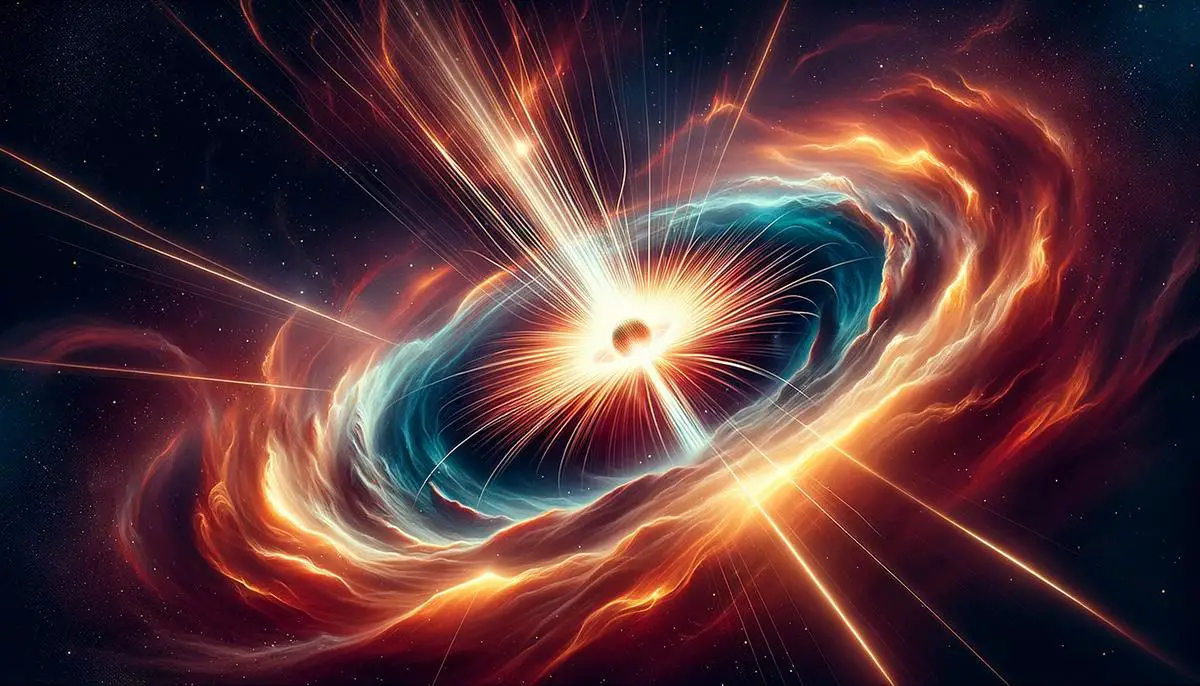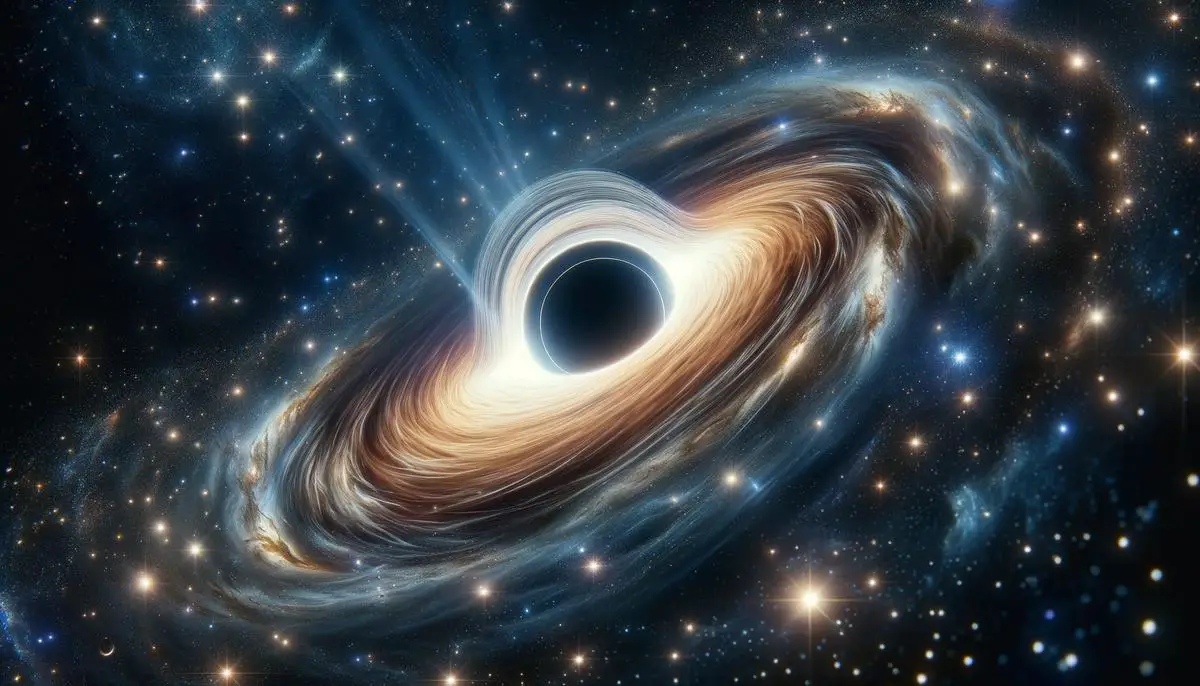Earendel Discovery
The discovery of Earendel by the Hubble Space Telescope, with James Webb Space Telescope providing further insights, has opened up a whirlwind of questions regarding the early universe. This star, shining brightly more than 12.9 billion years ago, presents an intricate puzzle for astronomers, reshaping our understanding of cosmic infancy.
Earendel brings to the forefront a pivotal challenge: how could such a massive, luminous star form so rapidly after the Big Bang? Astronomers previously assumed that the early universe was filled with smaller, less intense stars, as heavier elements crucial for forming big stars were scarce. Yet, Earendel contradicts this, suggesting our story of cosmic evolution might need revising.
This star's discovery also throws a spotlight on the process of gravitational lensing. The phenomenon, which acted like a cosmic magnifying glass to bring Earendel into view, underscores the role of galaxies and dark matter in shaping our view of the universe. This particular effect allowed us to peek closer into the universe's dawn than ever before, offering hints at more discoveries waiting beyond our current technological reach.
Besides challenging our notions of star formation, Earendel's presence in the extremely distant universe hints at the existence of more mature galaxies than we expected. If such massive stars existed, it is likely they were part of galaxies with the capability to host them. This pushes the boundary of our understanding regarding the maturation of galactic structures shortly after the Big Bang.
The temperature and luminosity of Earendel provide crucial data points. Discovery of its extraordinary heat and brightness leads to questions about the kind of environment needed for such phenomena. It raises the conversation about the early universe's capacity to host life-sustaining planets, altering the timeline of when habitable conditions could exist.
Considerations regarding Earendel's potential binary nature add layers to the puzzle of stellar evolution in the primeval universe. Since massive stars often exist within binary systems, exploring this star's companions, if any, could offer deeper insights into the dynamics and outcomes of early star formations.
Looking at this record-breaking discovery through Earendel, astronomers are optimistic about unearthing the very first stars of the universe, composed only of hydrogen and helium. Identifying such stars would not only be a monumental achievement in itself but significantly bolster our comprehension of the universe's chemical evolution, providing clarity on how complex elements came to be.
Earendel acts as a beacon from the distant past, illuminating uncertainties and compelling the scientific community to explore beyond established theories about the early universe. This discovery not only enriches our knowledge but reminds us of the vast mysteries space continues to hold.

Runaway White Dwarfs
The Enigmatic Velocity of Runaway Stars
The revelation of the fastest moving white dwarfs in our galaxy, propelled to eye-watering speeds by potential Type Ia supernovae, heralds a fascinating chapter in the saga of cosmic exploration. This unwrapping of stellar secrets not only refines our understanding of supernova dynamics but also highlights the nuanced interplay of forces orchestrating the universe's grand symphony.
These runaway stars, finding themselves racing through the Milky Way at velocities that defy the galactic gravitational clutch, provide a unique laboratory for probing the clandestine mechanics of supernova explosions. Type Ia supernovae, often narrated as stellar time bombs, result from a precise blend of mass, compaction, and binary star interactions. The unusually high velocities of these discovered dwarfs—some surpassing speeds that would carry them from New York to Mississippi in under a second—are a testament to the immense power of these cosmic phenomena.
The dynamics of Type Ia supernovae, revealing themselves through these fast-moving stars, offer a meticulous record of one of the most dramatic events in stellar evolution. These explosions arise from binary systems where a white dwarf greedily siphons matter from its companion, ticking closer to the critical mass where a thermonuclear reaction unleashes the supernova's fury. The resulting kinematic aftermath launches the surviving white dwarf at velocities capable of leaving the galaxy itself, akin to a cosmic slingshot effect.
What piques curiosity further is the transformation undergone by these runaway stars. Their temperatures soar, their compositions alter radically, and their trajectories become unpredictable journeys through space. The peculiarity of their makeup—a striking absence of hydrogen and helium, replaced instead by carbon and oxygen—paints a portrait of their tumultuous pasts. Such alterations are clues encrypted within the starlight, narratives waiting to be deciphered, narrating tales of their birth amidst supernova ferocity.
Beyond the spectacle of high-speed departures, these stellar revelations illuminate corners of our understanding regarding the fate of matter under extreme conditions. Encapsulated within this phenomenon are broader lessons about the distribution of elements in the cosmos, nucleosynthesis, and the very scaffolding of galactic structures.
In deciphering the balletic dance and tumultuous destinies of these renegade white dwarfs, astronomers glean deeper insights into the life cycles of stars. The whispering embers of Type Ia supernovae, echoing through the velocity of runaway stars, inform us about gravitational interactions, the role of magnetism in stellar deaths, and the inheritance of the cosmos. They nudge us closer to unraveling the tapestry woven by these stellar demise mechanisms, enhancing our grasp on the universe's evolutionary narrative.
As we chart these celestial sprinters across the boundless, black velvet of space, we edge ever closer to understanding the cosmic alchemy and mechanics that seed galaxies and sculpt the panorama of existence. The story of these swiftest moving white dwarfs is more than just a tale of escape and survival; it is a lens focusing on the intricate dynamics that govern life and death within the stars.

Record Gamma-Ray Emissions
Unveiling the Mysteries through Record-Breaking Gamma-Ray Emissions
The recent detections of unprecedented gamma-ray emissions from the sun and the Vela pulsar stand as sentinel events in the odyssey of astrophysical discovery. These observations, brimming with novelty, serve both to challenge our preconceptions and to deepen our knowledge of the cosmos. By shining a penetrating light on the mechanisms behind these high-energy emissions, we garner insights into a realm that teeters on the very edge of the known universe.
At the heart of this inquiry lies the solar system's very own beacon: the sun. Historically, our star was believed to emit gamma rays of up to a certain threshold. However, this conventional wisdom was dramatically overturned when the High-Altitude Cherenkov Observatory (HAWC) in Mexico laid bare gamma rays boasting an energy level nearly ten-fold that of previous detections. This startling revelation prompts a reevaluation of solar atmospheric dynamics and casts long-held theories into the crucible of scrutiny.
The gamma rays emitted from the sun, of immense interest to those studying solar physics, are produced when cosmic rays—particles propelled at nearly the speed of light from deep space—collide with the sun's atmospheric constituents. The detection of these extraordinary gamma rays holds a séance with the sun's enigmatic underpinnings, probing beneath its incandescent façade to glimpse the hidden interplay of magnetic fields and cosmic intricacies. Through these high-energy photons, we catch whispers of the processes churning below the sun's visible surface, processes capable of accelerating particles to such formidable energies.
Turning our gaze from the solar to the stellar, the Vela pulsar offers a contrasting yet equally perplexing canvas. Pulsars, the remnants of massive stars that have succumbed to supernova explosions, are lighthouses in the cosmic dark, casting beams of electromagnetic radiation across interstellar distances. The recent detection by the High Energy Stereoscopic System (HESS) in Namibia of gamma-ray photons pushing 20 TeV—vaulting past the Crab pulsar's record—proffers an invaluable vignette into the electrodynamics within these neutron stars.
What makes these observations noteworthy is not merely the recalibration of the upper limits of gamma-ray emissions but the theoretical introspection they command. The traditional view of gamma rays tapering off above certain energy levels is now contested territory. These transcendent detections hint at yet-undiscovered mechanisms capable of accelerating electrons within the pulsar's magnetic orthodoxy, stretching our comprehension of magnetic field interactions and particle dynamics to new horizons.
Employing groundbreaking technology and observational ingenuity, astronomers peer into the corpus of cosmic phenomena with increasing acuity. These record-breaking observations—ushered into clarity by instruments poised on Earth and in space—are artifacts of scientific rigor. They compel us to acknowledge the cosmos' vastness and its capacity to surprise, laying bare our nascent understanding of celestial mechanics.
As we piece together the puzzle of gamma-ray emissions, each discovery unfolds a chapter of a grander narrative—one authored by nature over epochs. These findings do more than augment our understanding of solar and neutron star environments; they invite us to ponder our place in an ever-evolving universe, steering us toward a deeper communion with the cosmos. Through examining these brilliant echoes from the sun and Vela pulsar, we stand on the cusp of resolving longstanding mysteries, ready to usher in new paradigms in astrophysical science.

Ancient Supermassive Black Holes
Exploring the Shadows: Ancient Supermassive Black Holes Illuminate Galaxy Formation
The cosmos, in its silent eloquence, spins tales of yore that challenge the bounds of imagination and understanding. Among these stories, the discovery of ancient, supermassive black holes serves as a narratorial focal point, shedding light on the enigmatic early chapters of the universe. The revelation of the most distant supermassive black hole ever detected, nestled within galaxy CEERS 1019, seen as it was a mere 570 million years post-Big Bang, acts not just as a beacon from the dawn of time but as a pivotal character in the saga of cosmic evolution.
This epochal finding, made possible through the eyes of the James Webb Space Telescope (JWST), presents an astronomical puzzle: how did such behemoth entities come into being at a nascent stage following the universe's inception? Their colossal existence, juxtaposed against the tender age of the cosmos, positions these black holes as linchpins in debating theories of galaxy formation and evolution.
The traditional narrative suggests that galaxies coalesce over eons, with black holes gradually accreting mass to achieve supermassive proportions. Yet, the presence of colossal black holes so soon after the Big Bang posits a preceding chapter of rapid, voracious growth. This not only presages a reexamination of black hole birth mechanisms but also propels us to reconsider their foundational role within galactic infrastructure. Could these gravitational titans be the unseen architects, orchestrating the universe's formative ballet through their immense gravitational influence?
In probing the characteristics of CEERS 1019 and its central void, we unveil clues to this cosmic enigma. The behemoth features – a mass about nine million times that of our sun – and the disheveled, possibly merger-augmented shape of its host galaxy hint at early, violent episodes of cosmic assembly. This supports the theory that supermassive black holes do not merely partake in but might instigate the gravitational congregations leading to galaxy formation. The possibility that galaxy mergers expedite black hole feasting and growth opens a riveting chapter on how galaxies accrue mass and mature.
Moreover, these ancient giants provide insights into the early universe's structural tapestry and its chemical compendium. As enforcers of cosmic order, their gravitational might shapes the fate of stars and gas clouds around them, potentially seeding the conditions for star birth or invoking stellar demise in their voracious appetites. In this gravitational interplay, they leave indelible marks on their surroundings, fostering environments ripe for deciphering the elemental evolution post-Big Bang.
This revelation underscores a universal truth: black holes, in their cryptic majesty, are not mere galactic occupants but cardinal forces in cosmic dramaturgy. By shedding light on their formative years and their galaxy-shaping capabilities, we edge closer to unraveling the grand design of the cosmos.
Handed down through the astronomical epochs, the manifestation of such supermassive, primordial black holes reaffirms their central tenet in our cosmic origin story. The JWST's gaze into the universe's adolescence provides an alfresco on the evolutionary trajectories of galaxies, weaving together the intricate tale of stars, gas, and dark matter choreographed by gravitational maestros. As seekers of cosmic truth, engaging with these luminous dark entities empowers us to envisage the universe's complexion in its nascent grandeur, enriching our comprehension of the spatial odyssey from singularity to the stellar metropolises we observe today.
Ensconced within our celestial inheritance is an understanding gleamed from the shadows cast by ancient supermassive black holes. Their antediluvian light continues to inform and transform our theories of galaxy formation, serving as milestones on our journey through cosmic time, guiding our quest for universal enlightenment.
![]()
